
Bipolar Disorder
in Adults
National Institute of Mental Health
U.S. Department of HealtH anD HUman ServiceS • national institutes of Health
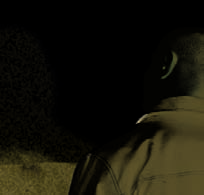
Contents
What is bipolar disorder? _____________________________________________ 1
What are the signs and symptoms of bipolar disorder? __________________ 1
How is bipolar disorder diagnosed? ____________________________________ 4
What illnesses often co-exist with bipolar disorder? _____________________ 6
What are the risk factors for bipolar disorder? __________________________ 6
Genetics _________________________________________________________ 6
Brain structure and functioning ___________________________________ 7
How is bipolar disorder treated? _______________________________________ 8
Medications ______________________________________________________ 9
Psychotherapy __________________________________________________ 14
Other treatments ________________________________________________ 16
What research is NIMH doing to improve treatments
for bipolar disorder? _________________________________________________ 17
How can I help a friend or relative who has bipolar disorder? ____________ 18
How can caregivers find support? ____________________________________ 19
How can I help myself if I have bipolar disorder? _______________________ 19
Where can I go for help? _____________________________________________ 20
What if I or someone I know is in crisis? _______________________________ 20
Citations ___________________________________________________________ 21
For more information on bipolar disorder ______________________________ 25
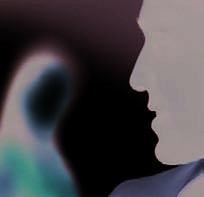
This booklet discusses bipolar disorder in
adults. For information on bipolar disorder
in children and adolescents, see the NIMH
booklet, Bipolar Disorder in Children and
Adolescents.
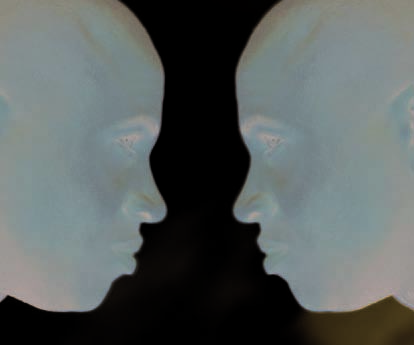
What is bipolar disorder?
Bipolar disorder, also known as manic-depressive
il ness, is a brain disorder that causes unusual
shifts in mood, energy, activity levels, and the abil-
ity to carry out daily tasks. Symptoms of bipolar
disorder can be severe. They are different from
the normal ups and downs that everyone goes
through from time to time. Bipolar disorder symp-
toms can result in damaged relationships, poor
job or school performance, and even suicide. But bipolar disorder can be treated,
and people with this il ness can lead full and productive lives.
Bipolar disorder often appears in the late teens or early adult years. At least half of
all cases start before age 25.1 Some people have their first symptoms during child-
hood, while others may develop symptoms late in life.
Bipolar disorder is not easy to spot when it starts. Some people suffer for years
before they are properly diagnosed and treated. Like diabetes or heart disease,
bipolar disorder is a long-term il ness that must be careful y managed throughout
your life.
What are the signs and symptoms of bipolar
disorder?
People with bipolar disorder experience unusual y intense emotional states that
occur in distinct periods cal ed “mood episodes.” Each mood episode represents
a drastic change from a person’s usual mood and behavior. An overly joyful
or overexcited state is cal ed a manic episode, and an extremely sad or hopeless
state is cal ed a depressive episode. Sometimes, a mood episode includes symp-
toms of both mania and depression. This is cal ed a mixed state. People with bipo-
lar disorder also may be explosive and irritable during a mood episode. Extreme
changes in energy, activity, sleep, and behavior go along with these changes in
mood.
Bipolar Disorder in Adults • 1
Symptoms of bipolar disorder are described below.
Symptoms of mania or a manic
Symptoms of depression or a
episode include:
depressive episode include:
Mood Changes
Mood Changes
• An overly long period of feeling
• An overly long period of feeling
“high,” or an overly happy or out-
sad or hopeless
going mood
• Loss of interest in activities once
• Extreme irritability.
enjoyed, including sex.
Behavioral Changes
Behavioral Changes
• Talking very fast, jumping from
• Feeling overly tired or “slowed
one idea to another, having racing
down”
thoughts
• Having problems concentrat-
• Being unusual y distracted
ing, remembering, and making
•
decisions
Increasing activities, such as
taking on multiple new projects
• Being restless or irritable
• Being overly restless
• Changing eating, sleeping, or
•
other habits
Sleeping little or not being tired
•
•
Having an unrealistic belief in your
Thinking of death or suicide, or
abilities
attempting suicide.
• Behaving impulsively and engag-
ing in pleasurable, high-risk
behaviors.
2 • National Institute of Mental Health
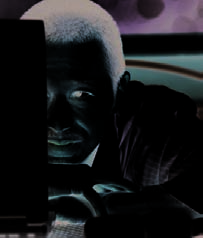
Bipolar disorder can be present even when mood swings
are less extreme. For example, some people with bipolar
disorder experience hypomania, a less severe form of
mania. During a hypomanic episode, you may feel very
good, be highly productive, and function wel . You may
not feel that anything is wrong, but family and friends
may recognize the mood swings as possible bipolar dis-
order. Without proper treatment, people with hypomania
may develop severe mania or depression.
Bipolar disorder may also be present in a mixed state, in which you might experi-
ence both mania and depression at the same time. During a mixed state, you might
feel very agitated, have trouble sleeping, experience major changes in appetite,
and have suicidal thoughts. People in a mixed state may feel very sad or hopeless
while at the same time feel extremely energized.
Sometimes, a person with severe episodes of mania or depression has psychotic
symptoms too, such as hal ucinations or delusions. The psychotic symptoms tend
to reflect the person’s extreme mood. For example, if you are having psychotic
symptoms during a manic episode, you may believe you are a famous person,
have a lot of money, or have special powers. If you are having psychotic symptoms
during a depressive episode, you may believe you are ruined and penniless, or you
have committed a crime. As a result, people with bipolar disorder who have psy-
chotic symptoms are sometimes misdiagnosed with schizophrenia.
People with bipolar disorder may also abuse alcohol or substances, have relation-
ship problems, or perform poorly in school or at work. It may be difficult to recog-
nize these problems as signs of a major mental il ness.
Bipolar Disorder in Adults • 3
How is bipolar disorder diagnosed?
Bipolar disorder usual y lasts a lifetime. Episodes of mania and depression typical y
come back over time. Between episodes, many people with bipolar disorder are
free of symptoms, but some people may have lingering symptoms.
Doctors diagnose bipolar disorder using guidelines from the Diagnostic and
Statistical Manual of Mental Disorders (DSM). To be diagnosed with bipolar
disorder, the symptoms must be a major change from your normal mood or
behavior. There are four basic types of bipolar disorder:
1. Bipolar I Disorder—defined by manic or mixed episodes that last at least seven
days, or by manic symptoms that are so severe that the person needs immedi-
ate hospital care. Usual y, depressive episodes occur as wel , typical y lasting at
least 2 weeks.
2. Bipolar II Disorder—defined by a pattern of depressive episodes and hypo-
manic episodes, but no ful -blown manic or mixed episodes.
3. Bipolar Disorder Not Otherwise Specified (BP-NOS)—diagnosed when symp-
toms of the il ness exist but do not meet diagnostic criteria for either bipolar I
or II. However, the symptoms are clearly out of the person’s normal range of
behavior.
4. Cyclothymic Disorder, or Cyclothymia—a mild form of bipolar disorder.
People with cyclothymia have episodes of hypomania as well as mild depres-
sion for at least 2 years. However, the symptoms do not meet the diagnostic
requirements for any other type of bipolar disorder.
4 • National Institute of Mental Health
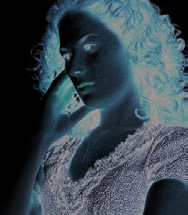
A severe form of the disorder is cal ed Rapid-cycling
Bipolar Disorder. Rapid cycling occurs when a person has
four or more episodes of major depression, mania, hypo-
mania, or mixed states, all within a year.2 Rapid cycling
seems to be more common in people who have their first
bipolar episode at a younger age. One study found that
people with rapid cycling had their first episode about
4 years earlier—during the mid to late teen years—than
people without rapid cycling bipolar disorder.3 Rapid
cycling affects more women than men.4 Rapid cycling can come and go.
When getting a diagnosis, a doctor or health care provider should conduct a physi-
cal examination, an interview, and lab tests. Currently, bipolar disorder cannot be
identified through a blood test or a brain scan, but these tests can help rule out
other factors that may contribute to mood problems, such as a stroke, brain tumor,
or thyroid condition. If the problems are not caused by other il nesses, your health
care provider may conduct a mental health evaluation or provide a referral to a
trained mental health professional, such as a psychiatrist, who is experienced in
diagnosing and treating bipolar disorder.
The doctor or mental health professional should discuss with you any family his-
tory of bipolar disorder or other mental il nesses and get a complete history of
symptoms. The doctor or mental health professional should also talk to your close
relatives or spouse about your symptoms and family medical history.
People with bipolar disorder are more likely to seek help when they are depressed
than when experiencing mania or hypomania.5 Therefore, a careful medical his-
tory is needed to assure that bipolar disorder is not mistakenly diagnosed as major
depression. Unlike people with bipolar disorder, people who have depression only
(also cal ed unipolar depression) do not experience mania.
Bipolar disorder can worsen if left undiagnosed and untreated. Episodes may
become more frequent or more severe over time without treatment.6 Also, delays in
getting the correct diagnosis and treatment can contribute to personal, social, and
work-related problems.7 Proper diagnosis and treatment help people with bipo-
lar disorder lead healthy and productive lives. In most cases, treatment can help
reduce the frequency and severity of episodes.
Bipolar Disorder in Adults • 5
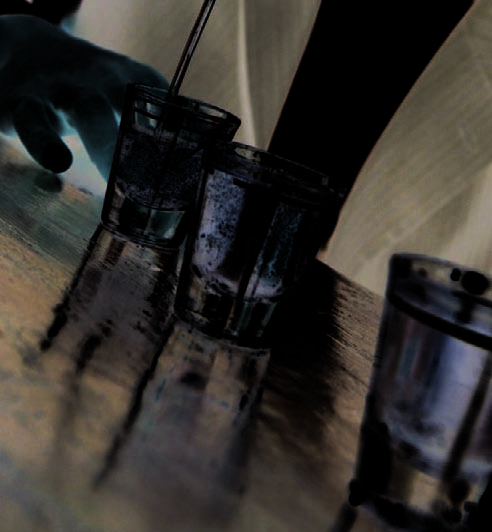
What illnesses often co-exist
with bipolar disorder?
Substance abuse is very common among people
with bipolar disorder, but the reasons for this link are
unclear.8 Some people with bipolar disorder may try to
treat their symptoms with alcohol or drugs. Substance
abuse can also trigger or prolong bipolar symptoms,
and the behavioral problems associated with mania can
lead to drinking too much.
Anxiety disorders, such as post-traumatic stress disorder (PTSD) and social
phobia, also can co-occur with bipolar disorder.9, 10, 11 Bipolar disorder can co-
occur with attention deficit hyperactivity disorder (ADHD) as wel , which has some
symptoms that overlap with bipolar disorder, such as restlessness and being easily
distracted. However, the symptoms of ADHD are persistent, whereas those of
bipolar disorder are episodic.
In addition, people with bipolar disorder are at higher risk for thyroid disease,
migraine headaches, heart disease, diabetes, obesity, and other physical il -
nesses.12, 13 These il nesses may cause symptoms of mania or depression, or they
may be caused by some medications used to treat bipolar disorder.
What are the risk factors for bipolar disorder?
Scientists are studying the possible causes of bipolar disorder. Most agree that
there is no single cause. Rather, many factors likely act together to produce the
il ness or increase risk for developing it.
Genetics
Bipolar disorder tends to run in families. Some research has suggested that
people with certain genes are more likely to develop bipolar disorder than others.14
Children with a parent or sibling who has bipolar disorder are much more likely to
develop the il ness, compared with children who do not have a family history of
bipolar disorder.15 However, most children with a family history of bipolar disorder
will not develop the il ness.
6 • National Institute of Mental Health
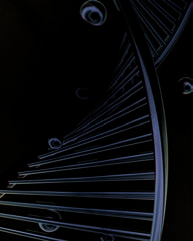
Technological advances are improving genetic research on bipolar disorder. One
example is the launch of the Bipolar Disorder Phenome Database, funded in part
by NIMH. Using the database, scientists will be able to link visible signs of the
disorder with the genes that may influence them.16
Scientists are also studying il nesses with similar symp-
toms such as depression and schizophrenia to identify
genetic differences that may increase a person’s risk for
developing bipolar disorder.17, 18, 19 Finding these genetic
“hotspots” may also help explain how environmental fac-
tors can increase a person’s risk.
But genes are not the only risk factor for bipolar disorder.
Studies of identical twins have shown that the twin of a
person with bipolar il ness does not always develop the disorder, despite the fact
that identical twins share all of the same genes. Research suggests that factors
besides genes are also at work. It is likely that many different genes and environ-
mental factors are involved. However, scientists do not yet ful y understand how
these factors interact to cause bipolar disorder.
Brain structure and functioning
Brain-imaging tools, such as functional magnetic resonance imaging (fMRI) and
positron emission tomography (PET), al ow researchers to take pictures of the
living brain at work. These tools help scientists study the brain’s structure and
activity.
Some imaging studies show how the brains of people with bipolar disorder may
differ from the brains of healthy people or people with other mental disorders.
For example, one study using MRI found that the pattern of brain development in
children with bipolar disorder was similar to that in children with “multi-dimensional
impairment,” a disorder that causes symptoms that overlap somewhat with bipolar
disorder and schizophrenia.20 This suggests that the pattern of brain development
in the two conditions may be associated with the risk for unstable moods.
Another MRI study found that the brain’s prefrontal cortex in adults with bipo-
lar disorder tends to be smal er and function less well compared to adults who
don’t have bipolar disorder.21, 22 The prefrontal cortex is a brain structure involved
in “executive” functions such as solving problems and making decisions. This
Bipolar Disorder in Adults • 7
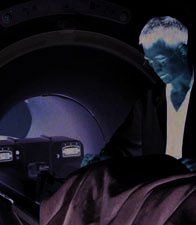
structure and its connections to other parts of the brain
mature during adolescence, suggesting that abnormal
development of this brain circuit may account for why the
disorder tends to emerge during a person’s teen years.23
Pinpointing brain changes in youth may help us detect il -
ness early or offer targets for early intervention.
The connections between brain regions are important
for shaping and coordinating functions such as forming
memories, learning, and emotions, but scientists know little
about how different parts of the human brain connect. Learning more about these
connections, along with information gained from genetic studies, helps scientists
better understand bipolar disorder. Scientists are working towards being able to
predict which types of treatment will work most effectively.
How is bipolar disorder treated?
Bipolar disorder cannot be cured, but it can be treated effectively over the long-
term. Proper treatment helps many people with bipolar disorder—even those with
the most severe forms of the il ness—gain better control of their mood swings and
related symptoms.24, 25, 26 But because it is a lifelong il ness, long-term, continuous
treatment is needed to control symptoms.27
However, even with proper treatment, mood changes can occur. In the NIMH-
funded Systematic Treatment Enhancement Program for Bipolar Disorder
(STEP-BD) study—the largest treatment study ever conducted for bipolar
disorder—almost half of those who recovered still had lingering symptoms. Having
another mental disorder in addition to bipolar disorder increased one’s chances for
a relapse.28 For more information about STEP-BD, see http://www.nimh.nih.gov/
trials/practical/step-bd/index.shtml.
Treatment is more effective if you work closely with a doctor and talk openly about
your concerns and choices. An effective maintenance treatment plan usual y
includes a combination of medication and psychotherapy.
8 • National Institute of Mental Health

Medications
Different types of medications can help control symptoms of
bipolar disorder. Not everyone responds to medications in
the same way. You may need to try several different medica-
tions before finding ones that work best for you.
Keeping a daily life chart that makes note of your daily
mood symptoms, treatments, sleep patterns, and life events
can help you and your doctor track and treat your il ness
most effectively. If your symptoms change or if side effects become intolerable,
your doctor may switch or add medications.
The types of medications general y used to treat bipolar disorder include mood
stabilizers, atypical antipsychotics, and antidepressants. For the most up-to-date
information on medication use and their side effects, contact the U.S. Food and
Drug Administration (FDA).
Mood stabilizers are usual y the first choice to treat bipolar disorder. In general,
people with bipolar disorder continue treatment with mood stabilizers for years.
Lithium (also known as Eskalith or Lithobid) is an effective mood stabilizer. It was
the first mood stabilizer approved by the FDA in the 1970’s for treating both manic
and depressive episodes.
Anticonvulsants are also used as mood stabilizers. They were original y developed
to treat seizures, but they also help control moods. Anticonvulsants used as mood
stabilizers include:
• Valproic acid or divalproex sodium (Depakote), approved by the FDA in 1995
for treating mania. It is a popular alternative to lithium. However, young women
taking valproic acid face special precautions. See the sidebar, “Should young
women take valproic acid?”
• Lamotrigine (Lamictal), FDA-approved for maintenance treatment of bipolar
disorder. It is often effective in treating depressive symptoms.
• Other anticonvulsant medications, including gabapentin (Neurontin), topiramate
(Topamax), and oxcarbazepine (Trileptal).
Bipolar Disorder in Adults • 9
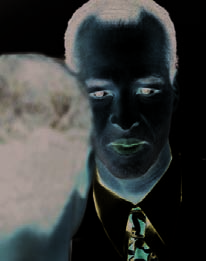
Valproic acid, lamotrigine, and other anticonvulsant medications have an FDA
warning. The warning states that their use may increase the risk of suicidal
thoughts and behaviors. People taking anticonvulsant medications for bipolar or
other il nesses should be monitored closely for new or worsening symptoms of
depression, suicidal thoughts or behavior, or any unusual changes in mood or
behavior. If you take any of these medications, do not make any changes to your
dosage without talking to your doctor.
What are the side effects of mood stabilizers?
Lithium can cause side effects such as:
• Restlessness
• Dry mouth
• Bloating or indigestion
• Acne
• Unusual discomfort to cold temperatures
• Joint or muscle pain
• Brittle nails or hair.
When taking lithium, your doctor should check the levels of lithium in your blood
regularly, and will monitor your kidney and thyroid function as wel . Lithium treat-
ment may cause low thyroid levels in some people.29 Low thyroid function, cal ed
hypothyroidism, has been associated with rapid cycling in some people with bipo-
lar disorder, especial y women.
Because too much or too little thyroid hormone can lead to mood and energy
changes, it is important that your doctor check your thyroid levels careful y. You
may need to take thyroid medication, in addition to medications for bipolar disor-
der, to keep thyroid levels balanced.
Common side effects of other mood stabilizing medications include:
• Drowsiness
• Dizziness
• Headache
• Diarrhea
• Constipation
10 • National Institute of Mental Health
• Heartburn
• Mood swings
• Stuffed or runny nose, or other cold-like symptoms.
These medications may also be linked with rare but serious side effects. Talk with
your doctor or a pharmacist to make sure you understand sig














